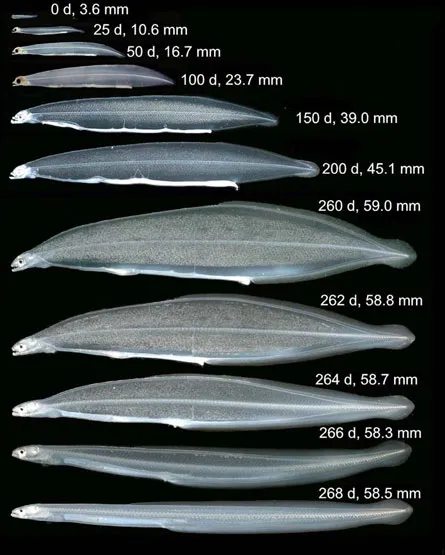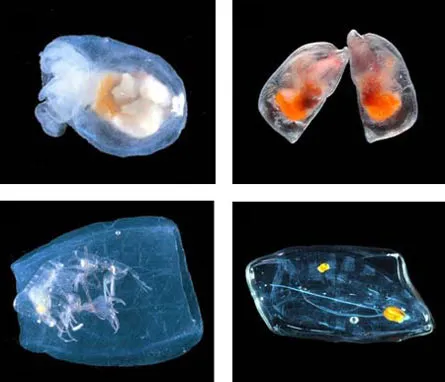- More than 2 years ago
Getting stats on elusive glass eel larvae has always been a slippery task. The young eels consist mostly of a jellylike matrix covered by a thin sheath of muscle, making them completely transparent. In fact, for centuries scientists thought that the young eels — called leptocephali — were a separate species of fish from the more solid-bodied adults.


Now scientists are reporting the specifics of how this gelatinous goo of the larval eels keeps them afloat. A team of researchers led by Katsumi Tsukamoto and Michael Miller of the University of Tokyo surveyed the specific gravity of 25 marine critters that typically dwell in the upper layer of the oceans — where floating particles of food are plentiful. Japanese eel larvae had one of the lowest specific gravities (the ratio of a material’s density, in this case the critter’s body, to the density of water). Among the surveyed taxa, which included baby jellyfish, specific gravities ranged from 1.020 to 1.425. But the young eels ranged from 1.019 to 1.043, lower than seawater’s specific gravity (1.024) in some cases.
Such a low specific gravity helps the animals float high in the water column, the researchers note in the April Marine Biology. The eels probably maintain this superb buoyancy through the chloride cells that cover their young bodies, allowing them to control the flow of ions. The researchers found that specific gravity increased in the older larvae, which were beginning to grow the muscle and bone that will weigh the eels down as they grow up.






